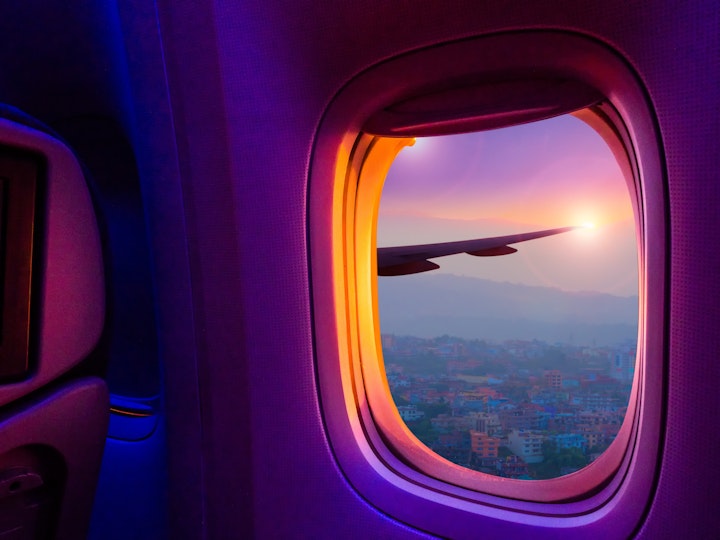International tourism will need more than an injection to recover
With the vaccine rollout underway, is there hope for international tourism? Professor Adrian Palmer discusses whether the pandemic has brought about long-term structural change in the sector.

The COVID-19 pandemic hit international tourism particularly hard – its closedown was swift and the sector has haemorrhaged staff and money throughout successive lockdowns. But there is now light at the end of the tunnel, with several travel companies reporting sharp increases in bookings for Summer 2021. As we begin to look forward, what will international tourism look like when a “new normal“ is established? Will COVID-19 have brought about long-term structural change in the sector, or will it simply speed up underlying long-term trends?
The confidence factor
Historically, one factor has been especially important in explaining the state of the international tourism sector – confidence. The sector lives and dies by confidence – among both customers and suppliers – so understanding confidence gives us insights to the sector’s recovery.
The scale of harm done to the sector is quite evident. The International Air Transport Association (IATA) reported that the supply of airline seat-kilometres fell by 58.6% in the year to November 2020, made worse because only 41.5% of these seats on international flights were actually sold. This unprecedented and sustained fall in international passenger arrivals has had corresponding devastating effects on businesses dependent on tourism, particularly hotels and tourism attractions.
When travel companies such as Saga issue press releases about resurgent bookings, this may be a true reflection of attitudes of travellers, feeling confident that vaccination will enable safe, unhindered travel once again. But travel companies have a long history of putting out good news stories of better times ahead, in the hope that a self-fulfilling prophecy will result from hesitant consumers gaining the confidence to book. However beyond confidence-building hype, there are strong reasons for believing that a bounceback in customer demand will be rapid and strong.
There has been much research showing that holidays are rising on households’ lists of spending priorities. For example the ABTA Holiday Habits report 2019 suggested a growing commitment by UK consumers to spending money on holidays, despite a problematic economic outlook. Consumer durable purchases may be postponed, but the opportunity to take the annual vacation is lost forever. Cheap loans and normalisation of debt has given cash-poor consumers confidence to borrow for a holiday, as long as they have confidence in their own economic future.
Some consumers have accumulated considerable savings during nearly a year of lockdown. The Centre for Economics and Business Research estimated that the average UK household savings ratio increased from 7% in 2019 to 19% in 2020, or £7,100 per household. Inequalities in society have been deepened during the pandemic and an Ipsos/Mori survey suggested that most of these additional savings were accumulated by wealthier, older consumers. This matches the profile of consumers who are most likely to take international holidays, so there is likely to be a wall of money waiting to be spent on pent-up demand for international tourism.
Confidence will be key to turning household savings into holiday bookings. The availability of vaccines has underpinned confidence that tourism will once again be accessible and less risky. History has shown that fear of travel soon evaporates from shocks as confidence builds up, underpinned by tourism’s long-term drivers of adventure, curiosity, and escapism. There were many predictions that international travel would never recover after the shock of 9/11 but just three years later, the US Bureau of Transportation Statistics reported that international travel had returned to pre-9/11 levels.
Holiday companies’ messaging about a rise in bookings is reflected by Google Trends which monitors the number of searches for travel with the main online travel agencies. These fell sharply in March 2020, rising in early June/July, falling in December, and now rising again. This is considered a good barometer of consumer confidence in the sector. But confidence is not just about consumers. This time round, a key issue will be confidence of the suppliers in the sector. Specifically, will capacity exist to cater for a sudden upsurge in demand?
Preparing for a take-off in demand
The pandemic has taken a lot of capacity out of the sector. IATA reported that in November 2020, 9,800 aircraft were laid up – nearly one third of all aircraft. Many have been withdrawn ahead of time and scrapped. Older cruise ships are being scrapped, and hotel capacity has been reduced, as marginally profitable units are closed and converted to alternative use. Can the sector turn capacity back on quickly?
Surviving airlines should be able to get back up and running quickly as aircraft are brought out of long-term storage and pilots re-employed, but there may be bottlenecks. A critical factor may be how many pilots have left the sector, leading to a shortage of pilots which was affecting airlines before the pandemic. New aircraft orders and options remain high, which will go some way to replacing aircraft which have been permanently withdrawn from service.
The recovery may be held back by the large number of airlines and tour operators which went out of business during the pandemic. For many, the pandemic simply accelerated underlying problems in their business models. Many companies that are left have become burdened with high levels of debt which they took on to survive. For example, the German tour operator TUI incurred an annual loss of €3bn in 2019/20, largely attributed to COVID-19. This pushed its net debt to net debt to €4.2bn, ameliorated by a €1.5bn rescue loan from the German government.
There will be good opportunities for new entrants to the sector who in the early days of recovery will be able to buy plentiful unused assets cheaply, and operate their business model without the debt burden of legacy companies. How quickly they will be able to re-establish additional capacity will partly be driven by the central feature of the sector – confidence.
Arguably the biggest harm done to the sector by the pandemic is the near exhaustion of many consumer protection measures. Firms in the travel sector have traditionally had a very good cash flow model – they take customers’ payments long before their holiday, and pay their suppliers long afterwards. Over-selling frequently leads to a mountain of outstanding bills growing faster than the inflow of new customers’ deposits. All too often, outstanding debts overtake new income, and collapse follows.
Fortunately, customers have been largely protected from bankruptcy of airlines and travel companies by paying into insurance funds such as the UK Civil Aviation Authority’s ATOL scheme, which reimburses customers of bankrupt companies. Unfortunately, with many recent failures, too many claims on these funds have depleted their reserves. Even credit card companies, who in the UK may find themselves liable to refund customers of failed travel companies under section 75 of the Consumer Credit Act, have been losing confidence in the sector, with reports that many are withholding up to 100% of customers’ payments until their holiday has been completed. Worse still, during Spring 2020, when travel companies traditionally see money flowing into their bank accounts, they were having to pay out for cancelled flights and holidays. The increasingly perilous state of travel companies’ finances has increased a pre-pandemic pressure for customers’ deposit payments to be ring-fenced and not available to firms as working capital. This alone has serious implications for how quickly firms in the sector could be set up and expand.
The journey towards recovery
The recovery of international tourism will involve a delicate balance between the confidence of customers and the confidence of suppliers. It will take time to get the sector back up to its previous capacity, due to business failures and decommissioning of facilities. Suppliers may be hesitant about committing too many resources to a recovery, for fear of further lockdowns. It seems quite likely that confidence of consumers will rise faster than confidence of suppliers, and through market forces this will lead to rising prices. Already, TUI has predicted that prices will be 14% higher in summer 2021 than a year earlier.
Demand for international tourism has historically grown fastest during periods of rapid price reductions. For example, EasyJet’s early promise of a flight to the Mediterranean for less than the price of a pair of jeans opened new markets for tourism. In the immediate post-COVID-19 scenario, costs of flying are likely to be increased, caused by restricted supply from airlines who have closed down, lingering measures to reduce the spread of the virus and emerging costs to reduce climate change. COVID-19 showed how many of us could survive without international travel, and governments may be emboldened to impose more costs to further curb climate change.
There are still many unknowns in predicting the course of the recovery. In the short-term, historically low oil prices will help to keep airlines’ costs down, but in the longer-term, measures to tackle climate change may add further to upward pressure on prices.
Some commentators have suggested that after the pandemic, we will enter the “Roaring 20s”, characterised by more indulgence and travel by consumers. Consumer confidence will undoubtedly lead to a pickup in demand, but the shape of tourism in the short to medium term is just as likely to be influenced by the confidence of suppliers.
You might also like
Leading with purpose for sustainable change
EU gender quota a 'historic step'
UK businesses need a digital overhaul, and apprenticeships could be the answer
This site uses cookies to improve your user experience. By using this site you agree to these cookies being set. You can read more about what cookies we use here. If you do not wish to accept cookies from this site please either disable cookies or refrain from using the site.
